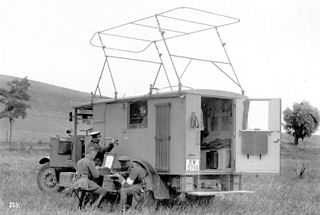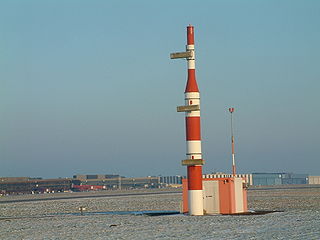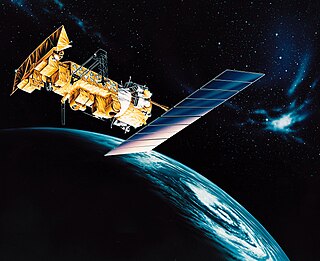
In telecommunications, a fixed service (or fixed radiocommunication service) is a radiocommunication service between specified fixed points. [1]

In telecommunications, a fixed service (or fixed radiocommunication service) is a radiocommunication service between specified fixed points. [1]
The ITU Radio Regulations (article 1) classify variations of this radiocommunication service as follows:
Fixed service
The ITU Radio Regulations regulates on law of nations scale radiocommunication services and the utilisation of radio frequencies. It is the supplementation to the Constitution and Convention of the International Telecommunication Union. In line to the ITU Constitution and Convention and the ITU International Telecommunication Regulations (ITR), this ITU Radio Regulations belong to the basic documents of the International Telecommunication Union. The ITU Radio Regulations comprise and regulate the part of the allocated electromagnetic spectrum from 9 kHz to 275 GHz.

Fixed-satellite service is – according to article 1.21 of the International Telecommunication Union´s (ITU) Radio Regulations (RR) – defined as A radiocommunication service between earth stations at given positions, when one or more satellites are used; the given position may be a specified fixed point or any fixed point within specified areas; in some cases this service includes satellite-to-satellite links, which may also be operated in the inter-satellite service; the fixed-satellite service may also include feeder links for other space radiocommunication services.
Fixed station is a station in the fixed service. Each station is classified by the service in which it operates permanently or temporarily.

Inter-satellite service is – according to Article 1.22 of the International Telecommunication Union´s (ITU) Radio Regulations (RR) – defined as «A radiocommunication service providing links between artificial satellites.»


In line with national regulations there are numerous radio applications in accordance with ITU RR article 1.20 on fixed services. These include:
Radio stations that cannot communicate directly due to distance, terrain or other difficulties sometimes use an intermediate radio relay station to relay the signals. Examples include airborne radio relay, microwave radio relay, and communications satellite. The American Radio Relay League was founded for this purpose but did not change its name when this became a less important part of its work.

Fixed wireless is the operation of wireless communication devices or systems used to connect two fixed locations with a radio or other wireless link, such as laser bridge. Usually, fixed wireless is part of a wireless LAN infrastructure. The purpose of a fixed wireless link is to enable data communications between the two sites or buildings. Fixed wireless data (FWD) links are often a cost-effective alternative to leasing fiber or installing cables between the buildings.
The allocation of radio frequencies is provided according to Article 5 of the ITU Radio Regulations (edition 2012). [2]
In order to improve harmonisation in spectrum utilisation, the majority of service-allocations stipulated in this document were incorporated in national Tables of Frequency Allocations and Utilisations which is with-in the responsibility of the appropriate national administration. The allocation might be primary, secondary, exclusive, and shared.
However, military usage, in bands where there is civil usage, will be in accordance with the ITU Radio Regulations. In NATO countries military fixed utilizations will be in accordance with NATO Joint Civil/Military Frequency Agreement (NJFA).

NJFA stands for NATO Joint Civil/Military Frequency Agreement and is the universal NATO common civil/military treaty to regulate the military access to the radio frequency spectrum in the range of 14 kHz to 100 GHz in peacetime, during exercises, in times of crisis, and in military operations. This document has been the basis for the frequency utilisation in NATO-Europe since 1982. Nations and organisations, e.g. partnership for peace countries, are invited to participate as deemed to be necessary.
An example of frequency allocation in the 8.3–110 kHz range would be:
| Allocation to services | ||
| Region 1 | Region 2 | Region 3 |
14-19.95 FIXED
| ||

Frequency allocation is the allocation and regulation of the electromagnetic spectrum into radio frequency bands, which is normally done by governments in most countries. Because radio propagation does not stop at national boundaries, governments have sought to harmonise the allocation of RF bands and their standardization.

Land mobile service is – in line to ITU Radio Regulations – a mobile service between base stations and land mobile stations, or between land mobile stations.

Aeronautical radionavigation service is – according to Article 1.46 of the International Telecommunication Union´s (ITU) Radio Regulations (RR) – defined as «A radionavigation service intended for the benefit and for the safe operation of aircraft.»
Mobile service is – in line to ITU Radio Regulations – a radiocommunication service between mobile and land stations, or between mobile stations (CV).

Meteorological aids service is – according to Article 1.50 of the International Telecommunication Union´s (ITU) Radio Regulations (RR) – defined as «A radiocommunication service used for meteorological, including hydrological, observations and exploration.»

Meteorological-satellite service is – according to Article 1.52 of the International Telecommunication Union´s (ITU) Radio Regulations (RR) – defined as « An earth exploration-satellite service for meteorological purposes.»

Earth exploration-satellite service is – according to Article 1.51 of the International Telecommunication Union´s (ITU) Radio Regulations (RR) – defined as «A radiocommunication service between earth stations and one or more space stations, which may include links between space stations, in which:

Land mobile-satellite service is – according to Article 1.27 of the International Telecommunication Union´s (ITU) Radio Regulations (RR) – defined as «A mobile-satellite service in which mobile earth stations are located on land.»
A maritime mobile service is a mobile service between coast stations and ship stations, or between ship stations, or between associated on-board communication stations. The service may also be used by survival craft stations and emergency position-indicating radiobeacon stations.

Maritime mobile-satellite service is – according to Article 1.29 of the International Telecommunication Union's Radio Regulations (RR) – "A mobile-satellite service in which mobile earth stations are located on board ships; survival craft stations and emergency position-indicating radiobeacon stations may also participate in this service".

Aeronautical mobile service is – according to Article 1.32 of the International Telecommunication Union´s (ITU) Radio Regulations (RR) – defined as «A mobile service between aeronautical stations and aircraft stations, or between aircraft stations, in which survival craft stations may participate; emergency position-indicating radiobeacon stations may also participate in this service on designated distress and emergency frequencies.»

Aeronautical mobile-satellite service is – according to Article 1.35 of the International Telecommunication Union´s (ITU) Radio Regulations (RR) – defined as «A mobile-satellite service in which mobile earth stations are located on board aircraft; survival craft stations and emergency position-indicating radiobeacon stations may also participate in this service. . »

Aeronautical mobile (R) service is – according to Article 1.33 of the International Telecommunication Union´s (ITU) Radio Regulations (RR) – defined as «An aeronautical mobile service reserved for communications relating to safety and regularity of flight, primarily along national or international civil air routes.»

Aeronautical mobile (OR) service is – according to Article 1.34 of the International Telecommunication Union´s (ITU) Radio Regulations (RR) – defined as «An aeronautical mobile service intended for communications, including those relating to flight coordination, primarily outside national or international civil air routes.»

Aeronautical mobile-satellite (R)° service is – according to Article 1.36 of the International Telecommunication Union´s (ITU) Radio Regulations (RR) – defined as «An aeronautical mobile-satellite service reserved for communications relating to safety and regularity of flights, primarily along national or international civil air routes.»

Aeronautical mobile-satellite (OR)°° service is – according to Article 1.37 of the International Telecommunication Union´s (ITU) Radio Regulations (RR) – defined as «An aeronautical mobile-satellite service reserved for communications relating to safety and regularity of flights, primarily outside national or international civil air routes.»
Radiodetermination-satellite service is – according to Article 1.41 of the International Telecommunication Union´s (ITU) Radio Regulations (RR) – defined as «A radiocommunication service for the purpose of radiodetermination involving the use of one or more space stations. This service may also include feeder links necessary for its own operation.»

Standard frequency and time signal-satellite service is, according to Article 1.54 of the International Telecommunication Union´s (ITU) Radio Regulations (RR), defined as A radiocommunication service using space stations on earth satellites for the same purposes as those of the standard frequency and time signal service.

Radiolocation-satellite service is – according to Article 1.49 of the International Telecommunication Union´s (ITU) Radio Regulations (RR) – defined as «A radiodetermination-satellite service used for the purpose of radiolocation. This (radiocommunication) service may also include the feeder links necessary for its operation.»